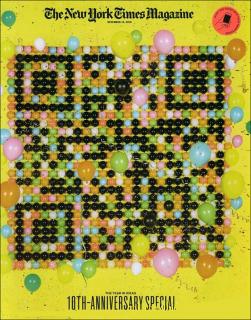Another year has passed, which means it’s time again for the NY Times Magazine’s annual The Year in Ideas issue, “a high-to-low, silly-to-serious selection of ingenuity and innovation from 2010.” As with the 2009 list, a number of these ideas are based around some bit of mathematics and/or statistical analysis. The ones I’ve listed below are the ones that most prominently feature mathematics ideas, or feature mathematics and/or mathematicians centrally.
- Perfect Parallel Parking by Jascha Hoffman mentions Simon Blackburn’s geometric analysis of parallel parking, which we covered on the blog previously. Updating that earlier story, Hoffman’s entry notes that Jerome White and some fellow teachers at Lusher Charter School in New Orleans subsequently improved the model. (White and company built in allowances for the driver to do a bit more maneuvering.)
- Aftercrimes visits a topic seen already here in this blog: just as earthquakes typically beget aftershocks, some types of crime beget copycat crimes. Mathematician George Mohler has been able to show that “the timing and location of the crimes can be statistically predicted with a high degree of accuracy.” For more info, check out the entry and the earlier blog post.
- The entry Social Media as Social Index describes some of the ways that researchers—academic, government, and corporate—are mining social networks like Twitter and Facebook for valuable information. For instance, algorithms analyzing millions of Twitter posts were able to predict how certain movies would perform at the box office and how the Dow Jones Industrial Average would perform in the near future. More social media data mining is undoubtedly in store, as the story ends with one Facebook officer quoted as saying that this is the future of opinion research.
- Finally, two entries which illustrate the public appetite for data analysis. Do-It-Yourself Macroeconomics describes the growing legion of “ordinary citizens” who are making it their business to “pull apart the [economic] data and come to their own conclusions.” All this is possible, of course, due to the explosion in publicly available economic data, one example of which is described in The Real-Time Inflation Calculator. As the story concludes, thanks to this (freely available) software, “Data on prices, once monopolized by government gatekeepers, are now up for grabs.”




